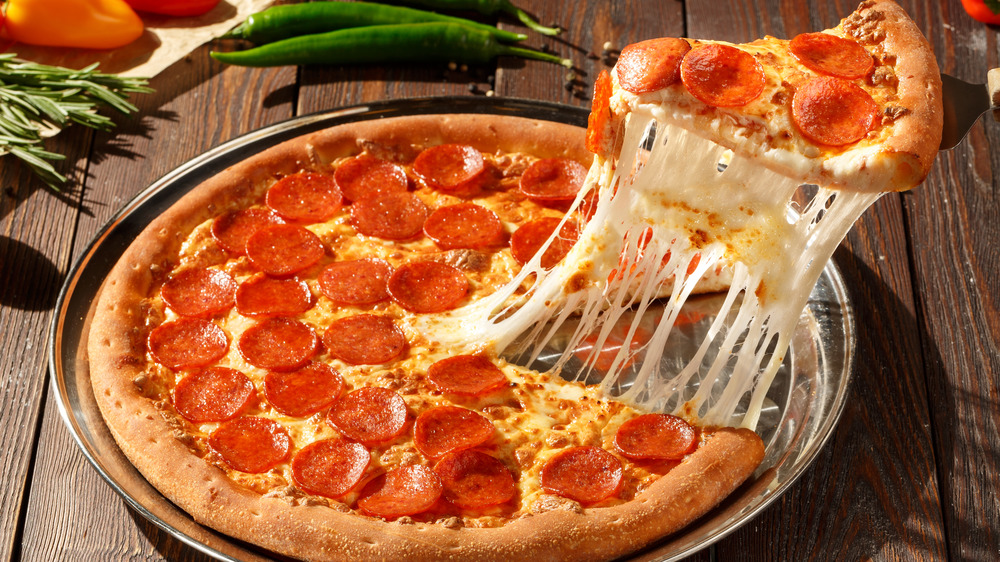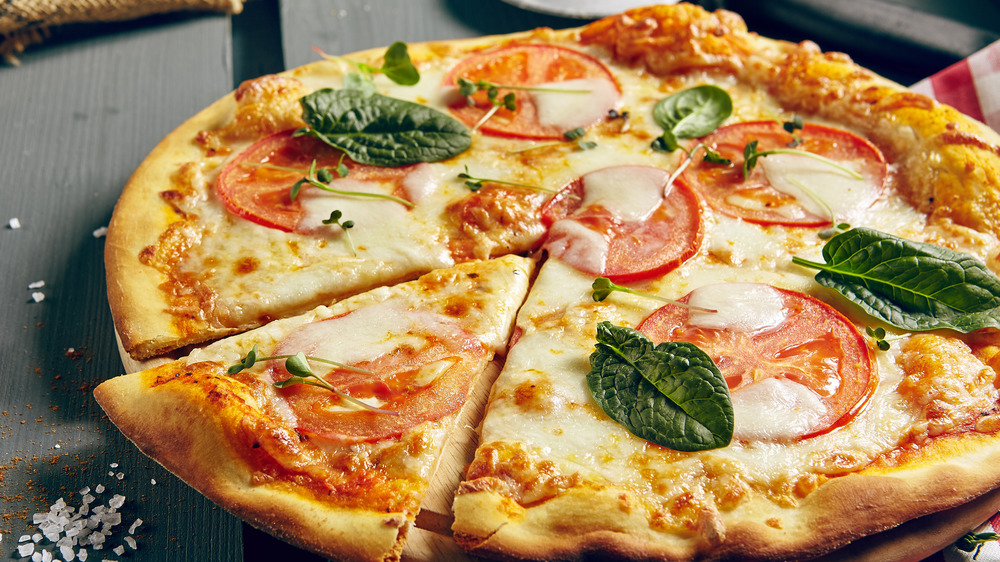How Authentic Pizza Is Different From The American Version
Pizza night is practically an American pastime — if you're too tired to cook or just craving gooey, melted cheese, crisp crust, and savory toppings, a pizza is always just a phone call away, almost everywhere. But while you might be used to what your local pizza place serves up, if you ever travel to Italy, don't expect to see the exact same meat- and veggie-loaded pizzas you're used to ordering in the U.S. In Italy, the crust, sauce, and toppings are all a little different from what we're used to getting delivered in America.
According to Tuscan Eats, the crust is the first major difference between American and authentic Italian pizza. In the U.S., you can find everything from ultra-thin, crispy crusts to thick, doughy deep dish pizzas, with most falling somewhere in between with at least a few inches of puffy crust bordering the outer edge of the pizza. In Italy, however, you probably won't see many fluffy crusts. Most pizzerias there will stretch the dough super thin, so that when it bakes, it's barely thicker than a cracker. Traditional pizza crust in Italy is almost always light and thin, in contrast to thicker, more filling American crusts.
Other differences between American and Italian pizza
Smooth red tomato sauce is also a staple of American pizza, but not necessarily traditional Italian pizza. According to Hungry Howie's, most U.S. restaurants use a slow-cooked tomato sauce. But in Italy, it's more common to use a blend of olive oil, pureed tomatoes, garlic, and oregano for a fresher flavor. Thrillist also reports that in the early 1900s, when pizza restaurants started opening in the U.S., they used cheap tomato sauce that was high in acidity. Usually, they mixed in sugar to balance out the acid, and if you order a cheap American slice today, it might still have added sugar in the sauce, and sometimes even in the dough.
Finally, you'll also notice some differences in toppings between the two types of pizzas. According to Tuscan Eats, American pizza usually has a lot more cheese than traditional pizza, because Italian pizzas are meant to be eaten on the go. Additionally, Hungry Howie's notes that you'll find a lot more options for toppings in America. Traditional Italian pizzas also don't mix meat toppings on pizzas; instead, they'll usually stick to just one meat topping per pizza to better appreciate the flavor. That means you probably won't get a meat lover's pizza in Italy, but that's just one of the perks of American pizza. Despite their differences, both American pizza and authentic Italian pizza are delicious in their own ways.

